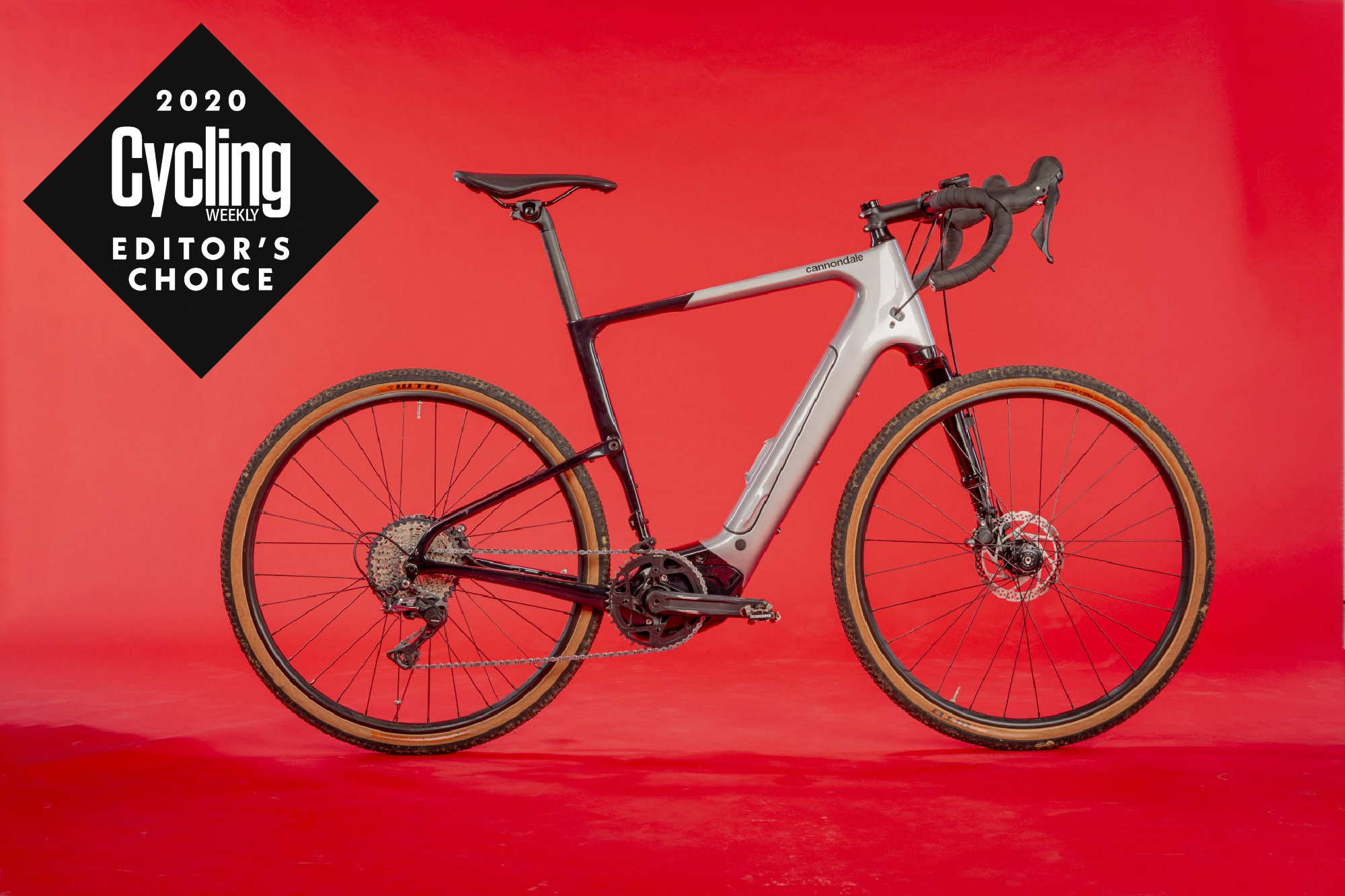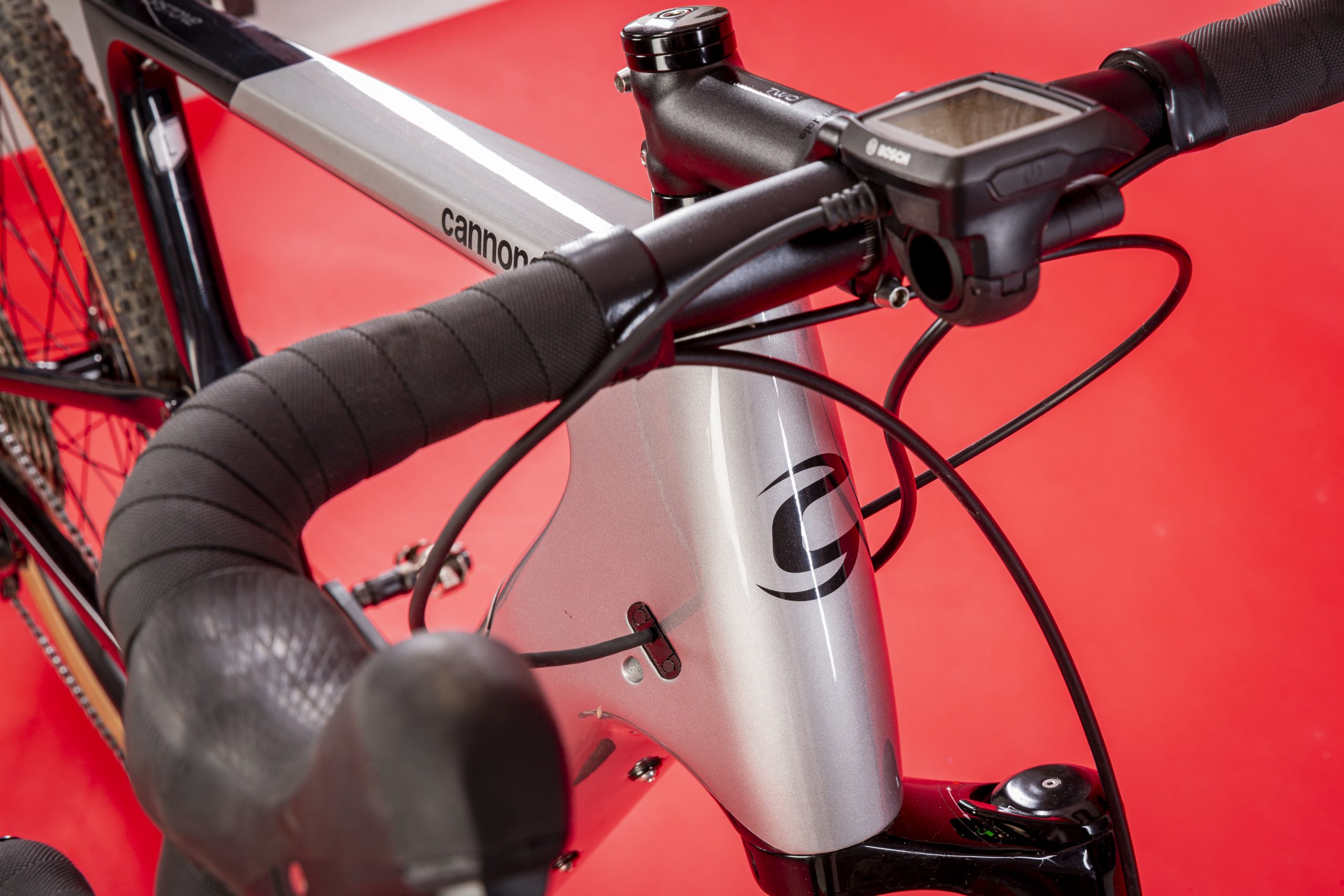Cannondale Topstone Neo Carbon Lefty 3 review
Full suspension and power assisted, is the Topstone Neo the ultimate gravel killer?

Cannondale's Topstone Neo makes you ask a lot of questions. It'll shock you with its power delivery and has the looks only it's creator could really love. But it's unrivalled in its class in terms of motor performance and the grin-inducing ride. The suspension adds another layer of capability and as a package and blurs the gravel/mtb divide even further. For most riders, it's more bike than they'll need - but it's a machine you have to try.
-
+
Handling and traction
-
+
Power application
-
+
Range
- +
-
-
Almost too much torque
-
-
Wheel spec
-
-
It's not pretty
You can trust Cycling Weekly.

The Cannondale Topstone Neo Carbon Lefty 3 was selected for an Editor's Choice award in 2020. This year's list contains 78 items which scored a 9 or 10/10 with our tech team - this gear is the best of the best, and has received the Cycling Weekly stamp of approval.
Never one to rest on its laurels, Cannondale has managed to sprinkle the upgrade wand on its highly regarded Topstone gravel model and brought some pretty drastic changes to the range. Most obvious of which is the release of the Neo version, turning one of the most capable gravel bikes on the market into a motor assisted monster truck.
Cannondale has released four Neo versions of the Topstone, two with a standard rigid carbon fork and two fitted with its unique Lefty Oliver suspension fork effectively creating a full suspension platform in combination with the Kingpin system already in place on all carbon framed Topstone models. Our test Topstone Neo Carbon Lefty 3 is the entry point into the full suspension club and sits below the £8000 Topstone Neo Carbon Lefty 1.
Frame and fork
Cannondale has been working on e-road bikes for quite a while now and put its know-how into effectively converting the standard Topstone Carbon frame to accommodate the motor and battery system without impacting negatively on the performance of the bike. The looks on the other hand - let's just say the Topstone Neo isn't the prettiest looking machine.

The BallisTec carbon fibre frame utilises the same Kingpin rear 'suspension' design launched last year. This neat system provides 30mm of rear wheel movement without adding the tonne of extra weight that rear suspension systems often do. The system relies on the carbon's ability to flex repeatedly without weakening, Cannondale then tunes the layup of carbon at specific points on the frame such as the seat tube, top tube and rear stays to provide controlled movement. The system also relies on the Kingpin itself, a simple mechanical pivot that joins the seatstays to the seat tube.
This pivot incorporates sealed bearings to keep things smooth. Cannondale suggests that these bearings should not cause any additional mechanical/durability issues and can be replaced by a mechanic if they do wear. This is more than just a gimmick, push down hard on the saddle and you can observe the entire system do its thing.
Read: Cannondale Topstone Carbon Ultegra Rx review
The latest race content, interviews, features, reviews and expert buying guides, direct to your inbox!

This particular Topstone Neo also features Cannondale's unique Lefty Oliver suspension fork. As the name implies it has a distinctive single side design that places all of the material on the left side of the wheel. Cannondale has effectively shrunk all of the key components of a standard telescopic suspension fork and piggy backed them in the one leg assembly.
The Lefty is a design that Cannondale has been championing for years and it offers the same level of stiffness in a slightly lighter (albeit less user-friendly) package. It's a little bit of a faff to remove the wheel, involving removing the disc caliper (via a quick release lever) and unscrewing the wheel with an Allen key. With the wheel removed your bike won't stand up easily but the Lefty does allow for tyre and tube fitting without removing the wheel. The Lefty Oliver in this guise provides 30mm of suspension movement to mirror the rear. It uses an air chamber for the main spring medium so you can tune the fork according to rider weight or riding style. There is also a lockout lever to switch the movement off and rebound adjustment to alter how quickly the fork returns to full length.
The best electric bikes for 2020
Geometry deviates from the Topstone blueprint, with the Neo version offering a slightly slacker head angle (a fifth of a degree, so splitting hairs really), steeper seat angle and a lower standover height. Chainstay length, often a tricky issue when trying to fit a motor system in, is 5mm longer. Fortunately, when combined with the 650b wheel size, this elongation doesn't overtly impact the ride and keeps the rear end tight and nimble enough for weaving through the trees.

Cable routing is internal on the Topstone Neo and it also has fittings for two water bottles inside the frame plus eyelets for a mudguard at the rear, obviously not at the front. The Topstone Neo is also dropper seatpost compatible but it's a real pity that Cannondale didn't fit one as standard.
Motor system
The fact that the Topstone Neo has full suspension sets it apart from almost every other gravel bike on the market. Cannondale has upped the ante even more and opted to shoehorn one of the most powerful motor systems available to date in the form of Bosch's Performance Line CX. E-gravel bikes are becoming more popular and many brands are opting to fit lighter systems with less output and smaller batteries, but with the Performance Line CX Cannondale has said 'stuff it' and gone the route of 'more is more'.

Of course, due to legal requirements, all motor systems are restricted to 250 watts of power output, so saying this system is more powerful isn't strictly true. But with motor systems, it's all about how and when that power is applied. The Performance Line CX provides up to 75Nm of torque in the highest of its four modes and it applies this hard and fast in the form of rapid acceleration even at a low pedalling cadence and over a wider cadence range than other systems. It also keeps applying this power up to its legally induced cut-off, which for the Topstone Neo seemed to be 26.9km/h.
As a shift towards boosting the range of the Topstone Neo, Cannondale has opted to use a larger 500Wh Bosch internal battery. This should be good enough for a range of up to 80 miles (128km), though it will vary depending upon your weight and the terrain. I was regularly able to ride 40+ miles mixing the power modes and barely using half a battery so I would say this range is certainly achievable.
Components
When you factor in a full carbon frame, suspension fork and sophisticated motor system, the budget left for the rest of the Topstone Neo's spec list is noticeably compromised.
It's all decent quality, reliable kit just nothing worthy of the wow factor you ought to get when spending £5k on a bike. Of course the one point that Cannondale will argue is that the rest of the kit comprises parts that will wear out and so can be upgraded in the future and that your investment lies with the aforementioned frame, fork and motor.

The drivetrain is the ubiquitous Shimano GRX. Shimano's gravel dedicated groupset provides almost perfectly sculpted levers for off-road use combined with probably the best stock disc brakes available. These have great modulation and enough power to bring this runaway train to a standstill in good time. The rear derailluer has the Shadow+ design of Shimano's MTB derailleurs to keep it our of the way of harm and it also has a wide capacity so you can a wide cassette like the 11-42 specced.
The wheels are probably the most disappointing part of the package when considering the level of investment in owning the Topstone Neo.
WTB's ST i23 rims are standard fitment for many brands but the extra weight and ability for the Topstone to rampage over harsher terrain leaves them feeling quite flimsy and even after a couple of weeks of riding I needed to get the spoke key out to re-tension both wheels. After a little crash which saw the bike bounce sideways onto the rear wheel (at slow speed), the weight of the bike had caused a bit of a wobble. The WTB Resolute tyres on the other hand cannot be faulted. Bags of grip when needed and still relatively fast rolling on the road, they've also reliably held onto air as a tubeless set-up.
The remaining finishing kit is all Cannondale except for the comfy Fabric Scoop saddle. The handlebar has a good amount of flare and overall width to aid control off-road. It would have been nice for Cannondale to have specced the Topstone Neo with a dropper post. It has the routing and of all of the gravel bikes I have ridden recently it probably is the most deserving.
The ride

You know the bit in the Mad Max films where everyone starts up their ludicrously souped-up vehicles? That kind of gives you the feel for the first time you take the Topstone Neo for a spin.
I've ridden plenty of electric mountain, road and gravel bikes but this just feels a little more urgent to get under way than most. It's the combination of ride position, suspension, motor power delivery and weight that just puts a huge grin on your face and lets you get on with the job of covering ground as fast as possible.
However, at times it all just feels a little too relentless. To refer to another film scene, I did feel like Wicket the Ewok when he stole a speeder bike in Return of the Jedi on several occasions. After a few rides, I learned greater respect for the higher power modes and actually appreciated the connection with 'normal' cycling that Eco mode brought (along with appreciating the extra range).
The Topstone Neo takes on terrain that I would ordinarily be a little cautious to ride on a normal gravel bike. The additional weight and suspension actually provide a level of stability over rocks and roots that enables higher speeds to actually feel safer. The added power also makes you seek out the steepest, most technical climbs and the grip the suspension and weight provides is phenomenal although you do need to trust in being seated/weight back more than normal in order to prevent the rear wheel from spinning.
I think the word capable springs to mind the most when riding the Topstone Neo. It's controlled and well-mannered on the road, would be an excellent bike-packing partner and of course it outperforms any e-gravel bike on the trails.
Value
The Topstone Neo Carbon Lefty 3 comes in right at the top of the small and select e-gravel market and is over £2000 more expensive than most of its rivals like the Cairn E-Adventure 1.0 and Kinesis Range. But these have aluminium frames, rigid forks and different motor tech whilst the Topstone Neo benefits from a lighter carbon frame, suspension technology, and that monster Bosch motor system. But like these other bikes, it represents relatively good value thanks to the versatility that this style of the machine brings, being suitable for everything from commuting to multi-day touring.
James Bracey's career has seen him move from geography teacher, to MBR writer, to Cycling Weekly's senior tech writer and video presenter. He possesses an in-depth knowledge of bicycle mechanics, as well as bike fit and coaching qualifications. Bracey enjoys all manner of cycling, from road to gravel and mountain biking.
